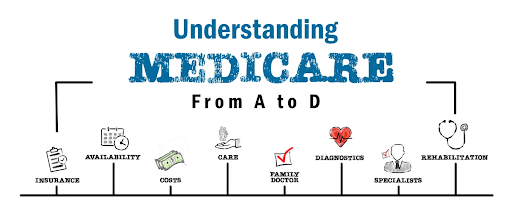Understanding Medicare: Coverage, Costs, Eligibility, and Enrollment Explained
Navigating the complexities of Medicare can be daunting, especially for older adults planning their healthcare needs. Understanding Medicare is crucial in ensuring optimal health insurance coverage during retirement.
Medicare serves as a federal health insurance program providing coverage options for individuals aged 65 and older, as well as certain younger individuals with disabilities or specific medical conditions. This comprehensive guide will delve into:
- Components of Medicare
- Eligibility criteria
- Enrollment periods
- Associated costs
- Coverage options
For personalized assistance in navigating Medicare, explore JYL Financial Group’s services.
What is Medicare?
Medicare is a federal health insurance program primarily aimed at providing coverage for individuals aged 65 and older. It also extends its benefits to younger individuals who meet specific eligibility criteria, such as those with certain disabilities or medical conditions like End-Stage Renal Disease (ESRD) or Amyotrophic Lateral Sclerosis (ALS).
Who Qualifies for Medicare?
Eligibility for Medicare generally falls into two main categories:
- Age-Based Eligibility: Individuals who are 65 years old or older.
- Disability-Based Eligibility: Younger individuals who have been receiving Social Security Disability Insurance (SSDI) for at least 24 months, as well as those diagnosed with ESRD or ALS.
Understanding the different parts of Medicare is crucial for comprehensive healthcare planning. The program consists of four main components:
- Medicare Part A: Covers hospital insurance.
- Medicare Part B: Provides medical insurance.
- Medicare Part C: Known as Medicare Advantage Plans, offering an alternative way to receive benefits from Parts A and B along with additional perks.
- Medicare Part D: Focuses on prescription drug coverage.
Each part works together to ensure that beneficiaries receive extensive healthcare coverage tailored to their needs.
For personalized assistance in navigating these options, you can visit JYL Financial Group.
Components of Medicare
Part A: Hospital Insurance
Medicare Part A, often referred to as Hospital Insurance, primarily covers inpatient hospital stays, care in a skilled nursing facility, hospice care, and some home health care services. Understanding the extent of this coverage is crucial for anyone planning for their healthcare needs.
What Part A Covers
- Inpatient Hospital Stays: Includes semi-private rooms, meals, general nursing, and drugs as part of your inpatient treatment. It also covers lab tests, X-rays, and surgeries.
- Skilled Nursing Facility Care: Coverage extends to short-term skilled nursing care following a qualifying hospital stay. Services include rehabilitation therapy and meals.
- Hospice Care: Provides comprehensive support for terminally ill patients, including pain relief, symptom management, and emotional support.
- Home Health Care Services: Limited to part-time or intermittent skilled nursing care and physical therapy under specific conditions.
Associated Costs
While Medicare Part A can cover significant portions of these services, beneficiaries are still responsible for some out-of-pocket costs:
- Deductibles: As of 2023, the deductible for each benefit period is $1,600.
- Coinsurance Amounts:
- Days 1-60: Beneficiaries pay $0 coinsurance per benefit period.
- Days 61-90: Beneficiaries pay $400 per day.
- Beyond day 90: Beneficiaries pay $800 per “lifetime reserve day” (up to 60 days over your lifetime).
- Beyond lifetime reserve days: All costs.
Understanding these costs helps in budgeting for potential healthcare expenses. It’s essential to be aware of these financial obligations to avoid unexpected bills during critical times.
Part B: Medical Insurance
Medicare Part B primarily covers medical services and supplies that are essential for diagnosis and treatment. Key services include:
- Doctor visits: Regular consultations with primary care physicians and specialists.
- Outpatient care: Services such as lab tests, X-rays, and outpatient surgeries.
- Preventive services: Screenings, vaccinations, and annual wellness visits aimed at early detection and prevention of illnesses.
- Durable medical equipment (DME): Items like wheelchairs, walkers, and oxygen equipment.
Regarding costs, Medicare Part B involves:
- Monthly premiums: Typically deducted from Social Security benefits. The standard premium amount may vary based on income.
- Annual deductible: Beneficiaries must pay this amount out-of-pocket before coverage kicks in.
- Coinsurance: After meeting the deductible, patients usually pay 20% of the Medicare-approved amount for most services.
Understanding these cost-sharing requirements is crucial to managing healthcare expenses effectively under Medicare Part B.
Part C: Medicare Advantage Plans
Medicare Advantage plans, or Medicare Part C, are another way to receive benefits from both Parts A and B. These plans are offered by private insurance companies approved by Medicare and often include additional perks such as vision, dental, and hearing coverage that Original Medicare does not offer.
Key Benefits of Medicare Advantage Plans:
- Comprehensive Coverage: Combines the services covered under Medicare Parts A and B.
- Additional Perks: May include extra benefits like routine dental visits, vision care, and even gym memberships.
- Cost Savings: Many beneficiaries find these plans cost-effective due to lower out-of-pocket expenses compared to Original Medicare.
Why Choose Medicare Advantage?
The popularity of Medicare Advantage plans has been growing among beneficiaries. One reason is the potential for cost savings; these plans often have lower premiums and out-of-pocket costs. Additionally, the convenience of having a single plan that covers multiple healthcare needs makes it an attractive option for many.
“Medicare Parts A,B,C,D each play a crucial role in providing comprehensive healthcare coverage. Understanding your options within Medicare Part C can help you make an informed decision about your healthcare needs.”
By exploring the unique advantages of Medicare Advantage plans, individuals can better tailor their healthcare coverage to meet personal health requirements and budget constraints.
Part D: Prescription Drug Coverage
Medicare Part D is designed to help cover the costs of prescription medications, an essential component for many beneficiaries. Unlike Parts A and B, Medicare Part D requires enrollment in a separate plan. These plans are offered by private insurance companies that are approved by Medicare.
Key points about Medicare Part D:
- Enrollment Options:You can enroll in a standalone Prescription Drug Plan (PDP) if you have Original Medicare (Parts A and B).
- Alternatively, you can enroll in a Medicare Advantage Plan (Part C) that includes drug coverage (MA-PD).
- Coverage Details:Each Medicare Part D plan has its own list of covered drugs, known as a formulary, which is divided into tiers based on cost.
- Plans may have different rules for how and when they cover certain drugs.
- Costs Involved:Premiums vary depending on the plan chosen.
- Additional costs may include annual deductibles, copayments, and coinsurance.
Understanding these aspects of Medicare Part D can ensure you select the most suitable plan for your medication needs.
Eligibility Requirements for Medicare Enrollment

Understanding the eligibility criteria for Medicare is crucial for planning your healthcare coverage. The general eligibility criteria can be divided into two main categories:
General Eligibility at Age 65
Most people qualify for Medicare when they turn 65. Key points include:
- Age Requirement: You must be at least 65 years old.
- Citizensship or Residency: You need to be a U.S. citizen or a permanent legal resident who has lived in the U.S. for at least five continuous years.
- Work History: You or your spouse must have worked and paid Medicare taxes for at least 10 years (40 quarters). If you do not meet the work history requirement, you may still be eligible but will likely have to pay a premium for Part A.
Special Conditions for Younger Individuals
Medicare also provides coverage to individuals under 65 who meet specific conditions:
- Disability: If you have been receiving Social Security Disability Insurance (SSDI) benefits for at least 24 months, you are eligible for Medicare.
- End-Stage Renal Disease (ESRD): Individuals with permanent kidney failure requiring dialysis or a kidney transplant are eligible regardless of age.
- Amyotrophic Lateral Sclerosis (ALS): Also known as Lou Gehrig’s disease, individuals diagnosed with ALS automatically qualify for Medicare once they begin receiving SSDI benefits.
These eligibility criteria ensure that both older adults and younger individuals with serious health conditions have access to essential healthcare services.
Key Enrollment Periods You Need To Know About
Understanding the key Medicare enrollment periods is crucial for ensuring timely and effective coverage. Missing these critical windows can lead to delayed benefits and potential penalties.
1. Initial Enrollment Period (IEP)
The Initial Enrollment Period is the first opportunity for most people to sign up for Medicare. This period spans seven months:
- Three months before turning 65
- The month of your 65th birthday
- Three months after turning 65
During this window, you can enroll in Medicare Part A and/or Part B. If you miss this period without having other credible coverage, you may face late enrollment penalties.
2. General Enrollment Period (GEP)
If you didn’t sign up during your Initial Enrollment Period, the General Enrollment Period offers another chance. The GEP runs from:
- January 1 to March 31 each year
Coverage begins on July 1 of the same year. Note that enrolling during the GEP might also result in late enrollment penalties, especially if you’re signing up for Part B.
3. Special Enrollment Periods (SEPs)
Special Enrollment Periods are available under certain circumstances, such as losing employer coverage or moving to a new area where different plans are available. These periods allow flexibility outside the standard IEP and GEP.
For personalized assistance in navigating these enrollment periods and choosing the right plan, visit JYL Financial Group.
Costs Associated With Each Component Of Medicare

Understanding the costs associated with each component of Medicare is crucial for effective financial planning. Here’s a breakdown:
Medicare Part A: Hospital Insurance
Medicare Part A typically comes without a premium for most beneficiaries, as it is funded through payroll taxes paid during one’s working years. However, some costs still apply:
- Deductible: Beneficiaries must pay a deductible before coverage kicks in. For 2023, this amount is $1,600 per benefit period.
- Coinsurance: After the deductible, there are coinsurance costs:
- Days 1-60 in a hospital: $0 coinsurance.
- Days 61-90: $400 per day.
- Beyond 90 days: $800 per “lifetime reserve day” (up to 60 days over your lifetime).
Medicare Part B: Medical Insurance
Medicare Part B involves more direct out-of-pocket costs:
- Premium: Standard monthly premium in 2023 is $164.90, though it can be higher based on income.
- Deductible: Annual deductible of $226.
- Coinsurance: After meeting the deductible, beneficiaries pay 20% of the Medicare-approved amount for most doctor services, outpatient therapy, and durable medical equipment.
Deductibles and Out-of-Pocket Expenses
Understanding deductibles and out-of-pocket expenses is essential:
- Deductibles are amounts you must pay before your insurance starts to cover costs. Both Parts A and B have their own deductibles.
- Out-of-Pocket Costs include copayments, coinsurance, and any costs not covered by Medicare. These can quickly add up without additional coverage such as Medigap or Medicare Advantage plans.
This knowledge helps in budgeting for healthcare expenses and choosing the right supplemental plans to minimize out-of-pocket costs.
Choosing The Right Plan For Your Healthcare Needs And Budget

Choosing the right Medicare plan involves evaluating several factors to ensure it aligns with your healthcare needs and budget. Here are the key considerations:
1. Health Status
Assess your current health conditions and medical history. Individuals with chronic illnesses or frequent medical needs might benefit from comprehensive plans like Medicare Advantage (Part C) that offer additional coverage for services such as vision or dental care.
2. Prescription Drug Requirements
Determine if you require regular medications and check if they are covered under Medicare Part D. Each Part D plan has a formulary, or list of covered drugs, which can vary significantly.
3. Budget Considerations
Compare the costs associated with each plan, including premiums, deductibles, and out-of-pocket expenses. Original Medicare (Parts A and B) might have lower premiums but higher out-of-pocket costs compared to Medicare Advantage plans.
4. Provider Preferences
Verify if your preferred doctors and hospitals accept the Medicare plan you’re considering. Some plans have network restrictions that could limit your choice of healthcare providers.
5. Additional Benefits
Look into any extra benefits offered by Medicare Advantage plans such as wellness programs, hearing aids, or fitness memberships.
JYL Financial Group offers tailored advice to help you navigate these choices. With expertise in Medicare planning, JYL Financial Group provides personalized recommendations based on your unique health needs and financial situation. Their independence allows them to partner with over 30 insurance carriers, ensuring access to a wide range of options tailored specifically for clients in Georgia, Alabama, and North Carolina.
Navigating Medicare can be a complex task, but understanding your options is crucial for making informed healthcare decisions. JYL Financial Group offers personalized assistance to help you understand and choose the best Medicare plan to suit your needs. Based in Georgia, they provide expert guidance on Medicare planning services, ensuring you receive optimal coverage.
Consultations are available in both English and Korean, making it easier for diverse clients to access their specialized advice. For tailored support in navigating your healthcare options, visit JYL Financial Group and take the first step towards securing your financial peace of mind.
FAQs
Medicare is a federal health insurance program designed to provide coverage for individuals aged 65 and older, as well as certain younger individuals with disabilities or specific medical conditions. Eligibility is primarily based on age or disability status.
Medicare consists of four main parts: Part A (Hospital Insurance), Part B (Medical Insurance), Part C (Medicare Advantage Plans), and Part D (Prescription Drug Coverage). Each part offers different types of coverage and has its own costs and requirements.
Medicare Part A covers inpatient hospital stays, skilled nursing facility care, hospice care, and some home health services. Beneficiaries may incur costs such as deductibles or coinsurance amounts depending on the services received.
You can enroll in Medicare during several key enrollment periods: the Initial Enrollment Period when you turn 65, the General Enrollment Period for those who missed their initial window, and Special Enrollment Periods for specific circumstances. It’s important to understand these timeframes to avoid gaps in coverage.
Costs associated with Medicare include premiums for Parts A and B, deductibles, and out-of-pocket expenses like coinsurance. Each component has different financial implications, so it’s crucial to review them based on your healthcare needs.
Choosing the right Medicare plan involves considering your personal health needs, budget, and preferences. Factors include whether you need additional coverage like vision or dental care. JYL Financial Group offers personalized advice to help you navigate your options effectively.






